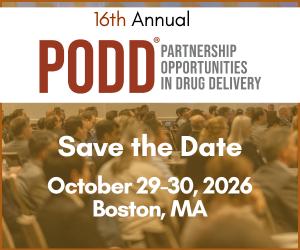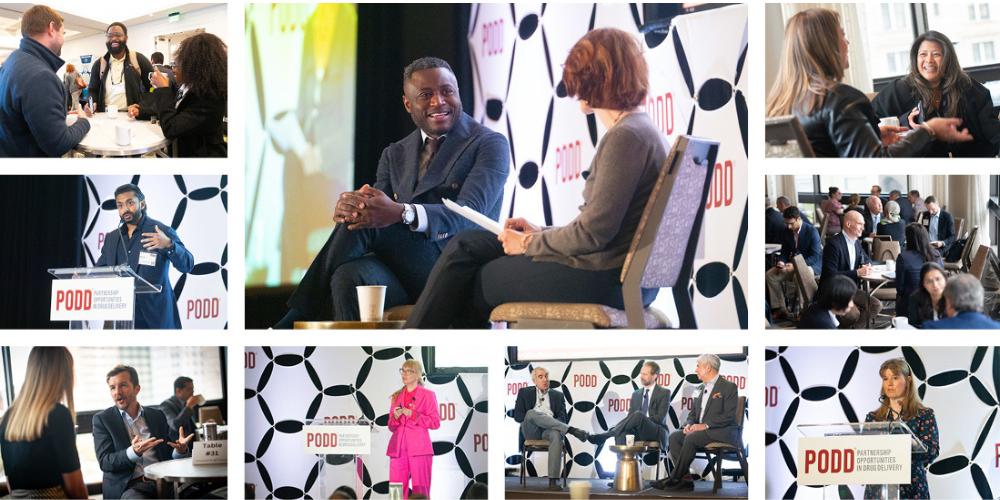AbbVie’s Global Head of Complex Devices and Delivery Systems on Regulatory Challenges in New Delivery Device Approval
AbbVie’s Alan Stevens discusses how companies can de-risk device development by working with regulators throughout the development process, and shares his perspective on connected devices, patient preferences and unmet needs.

Tell us about the work that you're leading at AbbVie.
As part of AbbVie’s device regulatory and combination products team within the regulatory affairs unit, I have a team that looks at complex devices like infusion pumps, autoinjectors, on-body injectors, etc. We handle the pre-market submissions, do regulatory assessments for post-approval changes, and we’re involved with the development teams in terms of regulatory strategy – as products are being developed, making sure that we are ready for submission.
What are the key hurdles in getting new delivery devices approved?
From a combination product perspective, the device generally has a single focus. A lot of regulatory challenges for combination products are around making sure that the performance of the device is matched up with its intended use.
From a development and cost perspective, there is always an emphasis on how we can get off-the-shelf or platform technologies and apply them to our product or to develop our device into a platform for future products we will develop. You need to make sure that you have the right amount of data for your application while also developing a regulatory strategy to gain efficiencies for future products.
From a more general device standpoint, a lot of the drug delivery devices approved as standalone devices like infusion pumps might have multiple indications or multiple uses for the same device. In that case, you need to build out the reliability and capability to produce a device that’s robust for all of the different applications where you may want to use it.
From a software perspective, there will be an increasing emphasis on software quality and cybersecurity. That will be a continued challenge for manufacturers moving forward.
And on top of all of that: you must keep an eye on the different global requirements for the same product. You need to be as efficient as possible when developing your design history file so that you have all of the requirements for the different regions where you want to launch your product.
"You need to be as efficient as possible when developing your design history file so that you have all of the requirements for the different regions where you want to launch your product."
For novel devices, how can companies better work with or educate regulators throughout the development process?
When you’re meeting with regulators, educate them about the technology you are using as well as how it is being implemented for your patients. Explain what specific risks are associated with your patients.
The regulator is seeing thousands of applications a year and has a broad view of the risks associated with certain technologies. They have a bucket list of things they’re looking for like software or cybersecurity or human factors. You don’t want them to match up things that they’re concerned with about your product that aren’t applicable or aren’t high risk. They don’t know your product as well as you, so don’t make assumptions about their level of knowledge.
Instead, get them aligned with you in terms of what the technology is and what the risks are for your specific drug/device combination and patients. As you move forward with the development and the reviews of your product, the regulator will be in the same space with you in terms of the risk-benefit profile and the type of information they’re looking for.
What processes or meeting types could be used to introduce device technologies early in the program to reduce the downstream submission risk?
In terms of FDA meetings, there are a couple of different options. The ideal is submitting a Type C meeting through CDER where you introduce the technology specific to the drug that it will be combined with. Another option if you have more of a platform device without the direct product it will be paired with is to request an informational meeting directly with the device team in CDRH through the CDRH Q-submission process. Informational meetings don’t have any questions tied to them, so you informally present your technology and generally get feedback and questions even if it isn’t formal.
"Get regulators aligned with you in terms of what the technology is and what the risks are for your specific drug/device combination and patients."
What are the global regulatory challenges in getting large volume delivery devices approved and what should companies be mindful about when getting into the space?
Meeting the requirements of the ISO 11608 standard is a challenge. There is still a lot of ambiguity as to how to meet some of the requirements in 11608 Part 6 like adhesion testing, occlusion alarms and things like that. Those are areas where industry and regulators need to do a lot of work over the next 5-10 years to clarify the standards.
Given the current drug delivery device landscape, where do you see room for improvement or unmet needs?
There has been a shift to patients self-administering products. As products get pushed into that space, you need technologies that are more user friendly. A lot of the challenges right now are that patients make mistakes while handling the device which can result in them missing doses. Existing products need to move into a more user-centered design and increase human factors engineering. Also, particularly when dealing with larger volumes, it can become a challenge for patients to carry and handle larger devices.
Are connected devices still a priority or should they only be developed for specific therapies where it makes sense?
There is a lot of promise for connected drug delivery systems to enhance patient lives by improving the usability of the product or the overall therapy more broadly. A lot of that promise still has not come to fruition. There was a lot of hype around this digital health 5-10 years ago and there are pockets where it’s been implemented in a really meaningful way but like any user-centered design, to integrate it effectively you need a specific design intent and to get the funding to develop it. There is a lot of promise, but broadly speaking we haven’t seen widespread implementation yet. Digital health adds cost and complexity and risk to your product, so you really need to think about the benefit for patients.
"We are going to continue to see regulators scrutinize the manufacturing side, which is something devices typically in the US haven’t had to deal with. I think that’s going to be a big change."
What's your opinion on patient perceptions of a single large volume device versus more frequent, smaller volume delivery technologies like autoinjectors?
Anecdotally, patient preference probably depends a lot on the target population. Some patients would rather multiple autoinjectors in different sites and then be done with it rather than sitting for 5-10 minutes while several ml of liquid is delivered into one site. It will be highly dependent on the specific indication and the patients’ preference. For any given patient population, there will be people that prefer one or the other.
What do you anticipate in terms of regulatory attitudes as we move forward?
We’re going to continue to see regulators emphasize safety, quality and reliability in the device space. We are going to continue to see regulators scrutinize the manufacturing side, which is something devices typically in the US haven’t had to deal with. I think that’s going to be a big change. Regulators will not only be looking at the essential performance of the device but also the quality of the manufacturing side as well. There is also an emphasis on harmonizing global requirements for medical products.









